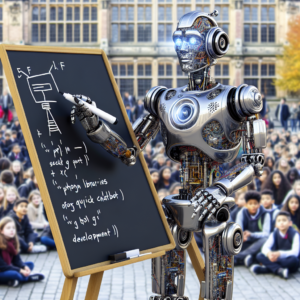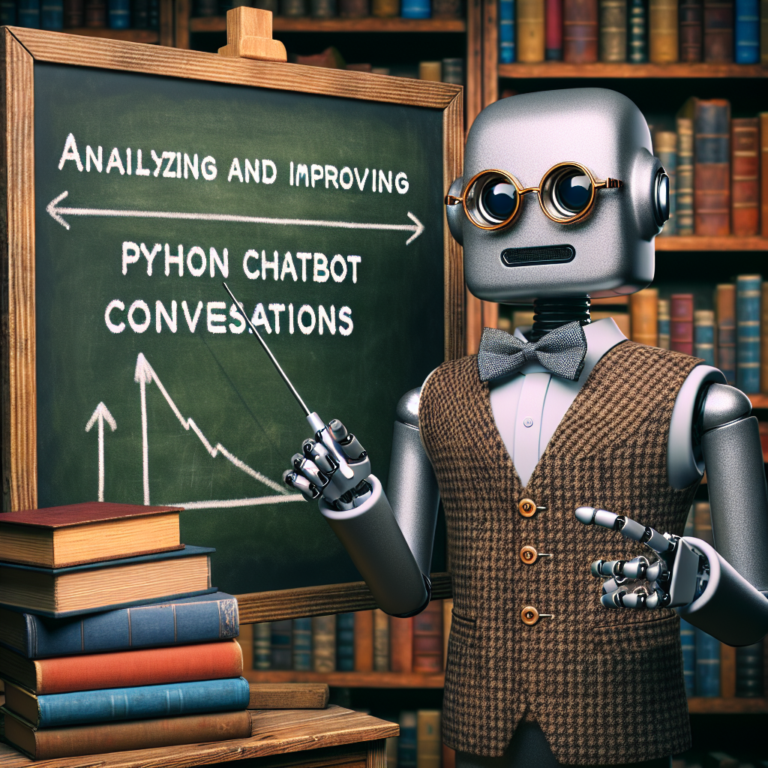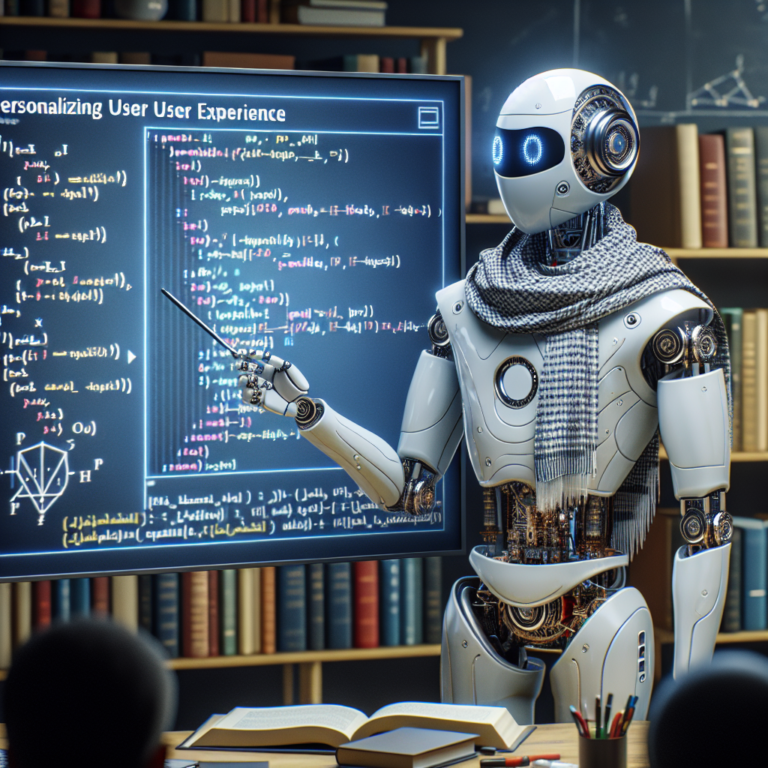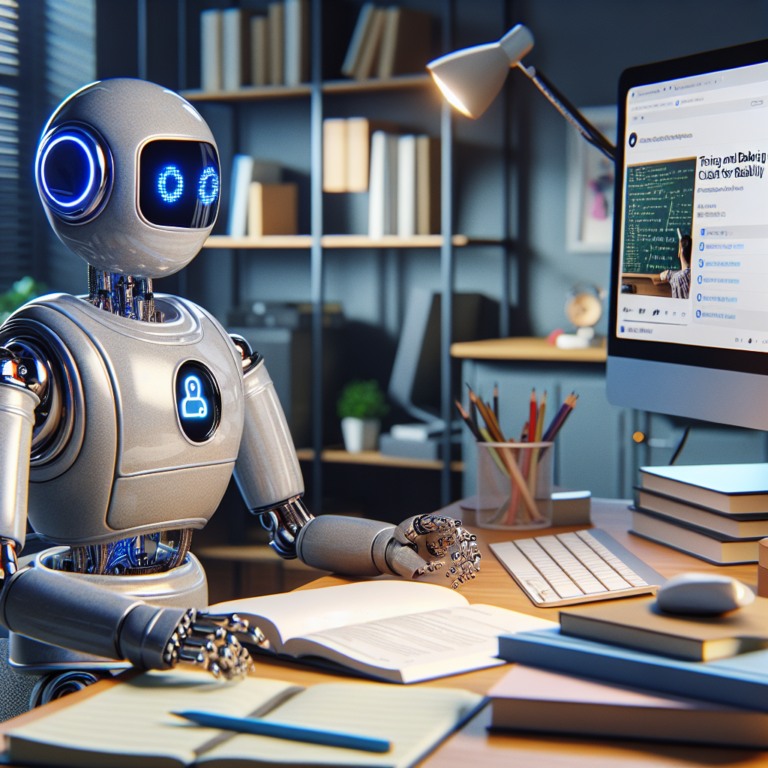1. Overview of Python Libraries for Chatbot Development
Developing chatbots can be a complex process, but Python offers a range of libraries that simplify the creation and integration of chatbots across various platforms. This section explores several key Python libraries that are instrumental in building chatbots quickly and efficiently.
Python libraries such as ChatterBot and NLTK provide foundational tools for processing natural language and crafting responses. ChatterBot allows for the creation of chatbots that can learn from conversations with users. It uses a combination of machine learning algorithms to generate responses based on collected input and output pairs.
from chatterbot import ChatBot
from chatterbot.trainers import ChatterBotCorpusTrainer
chatbot = ChatBot('Example Bot')
trainer = ChatterBotCorpusTrainer(chatbot)
trainer.train("chatterbot.corpus.english")
For more advanced natural language processing tasks, libraries like spaCy and transformers are invaluable. These libraries offer robust tools for tokenization, named entity recognition, and part-of-speech tagging, which are essential for understanding user queries and generating relevant responses.
import spacy
nlp = spacy.load("en_core_web_sm")
doc = nlp("Hello, how can I help you today?")
for token in doc:
print(token.text, token.pos_)
Integration with messaging platforms can be facilitated by libraries such as Flask and Django for creating webhooks, and python-telegram-bot or discord.py for connecting to Telegram and Discord, respectively. These tools ensure that your chatbot can operate on the platforms where your audience is most active, enhancing the quick chatbot development process.
Utilizing these Python libraries not only accelerates the development of chatbots but also enhances their functionality, making them more responsive and capable of handling complex interactions. This foundation allows developers to focus on customizing chatbot behavior and integrating unique features tailored to specific needs.
2. Essential Python Libraries for Quick Chatbot Development
When building chatbots, selecting the right Python libraries can drastically reduce development time and enhance functionality. This section highlights essential libraries that are crucial for quick chatbot development.
ChatterBot is renowned for its simplicity and effectiveness in creating conversational bots. It learns from user inputs to improve its conversational abilities over time, making it ideal for developers looking to implement adaptive learning chatbots.
from chatterbot import ChatBot
chatbot = ChatBot("My Chatbot")
NLTK (Natural Language Toolkit) is another indispensable library for processing human language data. It supports tasks such as classification, tokenization, stemming, tagging, parsing, and semantic reasoning, which are foundational for understanding and generating human-like responses in chatbots.
import nltk
nltk.download('punkt')
from nltk.tokenize import word_tokenize
tokens = word_tokenize("Hello, how are you?")
print(tokens)
For developers needing advanced NLP capabilities, spaCy offers robust features for large-scale information extraction tasks. It is well-suited for building chatbots that require deep linguistic analysis to understand context and intent accurately.
import spacy
nlp = spacy.load("en_core_web_sm")
doc = nlp("I need help with my account.")
for ent in doc.ents:
print(ent.text, ent.label_)
Integrating chatbots with existing systems and platforms is facilitated by Flask and Django. These frameworks support the development of web-based chatbots and can handle HTTP requests, which are essential for chatbots that operate over the internet.
Utilizing these Python libraries not only accelerates the development process but also ensures that the chatbots are powerful, scalable, and capable of sophisticated interactions. This makes them invaluable tools for any developer looking to create efficient and effective chatbot solutions.
2.1. Natural Language Processing Libraries
For quick chatbot development, leveraging Natural Language Processing (NLP) libraries is crucial. These libraries provide the tools necessary for chatbots to understand and process human language effectively.
NLTK (Natural Language Toolkit) is a popular choice among developers for its comprehensive suite of language processing tools. It includes support for classification, tokenization, stemming, tagging, and parsing, which are essential for developing sophisticated chatbot interactions.
import nltk from nltk.sentiment import SentimentIntensityAnalyzer sia = SentimentIntensityAnalyzer() text = "I'm happy to help with your request." print(sia.polarity_scores(text))
spaCy is another powerful library favored for its speed and accuracy in processing text. It excels in tasks like entity recognition and dependency parsing, making it ideal for chatbots that need to understand complex user queries.
import spacy
nlp = spacy.load("en_core_web_sm")
doc = nlp("Please book a flight to New York")
for ent in doc.ents:
print(ent.text, ent.label_)
For developers integrating machine learning into their chatbots, transformers by Hugging Face offer state-of-the-art pre-trained models that can be fine-tuned for various NLP tasks. These models are particularly useful for understanding context and generating human-like responses.
from transformers import pipeline
classifier = pipeline('sentiment-analysis')
result = classifier("I love using Python for chatbot development!")
print(result)
Utilizing these Python libraries enhances the capability of chatbots to engage in more meaningful and context-aware conversations, significantly boosting the efficiency of chatbot development projects.
2.2. Integration and Interface Libraries
Integrating chatbots into various messaging platforms and web services is a critical step in quick chatbot development. Python offers several libraries that simplify this integration, making it possible to deploy chatbots across different environments efficiently.
Flask is widely used for creating APIs that chatbots can utilize to communicate with web applications. It’s lightweight and easy to use, making it ideal for developers looking to quickly set up webhooks for their chatbots.
from flask import Flask, request, jsonify
app = Flask(__name__)
@app.route('/webhook', methods=['POST'])
def webhook():
data = request.get_json()
return jsonify(data)
if __name__ == '__main__':
app.run(port=5000)
Django offers more robust features for larger applications, supporting complex chatbot integrations with databases and user authentication systems. It’s particularly useful for developers building enterprise-level chatbot solutions.
from django.http import JsonResponse
from django.views.decorators.csrf import csrf_exempt
@csrf_exempt
def webhook(request):
if request.method == 'POST':
data = request.POST
return JsonResponse(data, safe=False)
For real-time messaging integration, libraries like python-telegram-bot and discord.py are essential. They provide straightforward interfaces to connect chatbots with Telegram and Discord, respectively, allowing for the creation of interactive and responsive chatbot experiences.
import telegram
from telegram.ext import Updater, CommandHandler
def start(update, context):
update.message.reply_text('Hello! I am your chatbot.')
updater = Updater(token='YOUR_TOKEN_HERE', use_context=True)
dp = updater.dispatcher
dp.add_handler(CommandHandler('start', start))
updater.start_polling()
updater.idle()
By utilizing these Python libraries, developers can ensure their chatbots are not only functional but also versatile, capable of operating across multiple platforms and reaching a wider audience. This integration is key to deploying effective and engaging chatbots.
3. Implementing Chatbot Libraries in Python Projects
Integrating chatbot libraries into Python projects involves several key steps that ensure the chatbot functions effectively within your application. This section outlines the practical steps to incorporate these libraries seamlessly.
Firstly, choose the appropriate library based on your project’s needs. For instance, if your chatbot requires deep natural language understanding, spaCy or NLTK might be suitable. For simpler, rule-based interactions, ChatterBot could be ideal.
from chatterbot import ChatBot
chatbot = ChatBot("My Chatbot")
Next, set up the environment. This involves installing the Python library using pip, setting up a virtual environment, and configuring necessary dependencies. For example, installing spaCy can be done via pip:
pip install spacy python -m spacy download en_core_web_sm
Then, integrate the chatbot into your existing Python application. This might involve writing functions that handle incoming messages and use the chatbot library to generate responses. Here’s a simple example using Flask to create a web-based chatbot:
from flask import Flask, request, jsonify
app = Flask(__name__)
@app.route("/chat", methods=["POST"])
def chat():
user_message = request.json["message"]
response = chatbot.get_response(user_message)
return jsonify({"response": str(response)})
if __name__ == "__main__":
app.run()
Finally, test and refine your chatbot. Ensure it responds accurately and handles errors gracefully. Testing can be done through unit tests or by interacting with the chatbot directly to assess its performance.
By following these steps, you can effectively implement Python libraries for quick chatbot development and create a chatbot that enhances user engagement and automates tasks efficiently.
4. Best Practices for Efficient Chatbot Development with Python
Efficient chatbot development with Python involves more than just choosing the right libraries; it requires adherence to best practices that ensure robustness, scalability, and maintainability. Here are key strategies to optimize your chatbot projects.
Start with a clear design: Before coding, define your chatbot’s purpose, functionalities, and the flow of conversation. This clarity will guide your development process and help you select the appropriate Python libraries.
Focus on user experience: Design interactions that are simple, intuitive, and engaging. Ensure your chatbot handles errors gracefully and maintains a conversational context to enhance user satisfaction.
Implement modular architecture: Use a modular approach for easy maintenance and scalability. This allows you to update individual aspects of your chatbot without overhauling the entire system.
Utilize version control: Always use version control systems like Git to manage changes and collaborate effectively with other developers. This practice is crucial for tracking modifications and coordinating team efforts.
Test thoroughly: Regular testing is essential to ensure your chatbot performs well under various scenarios. Include unit tests, integration tests, and user acceptance tests to cover all bases.
Optimize for performance: Analyze and optimize your chatbot’s performance regularly. Profiling tools can help identify bottlenecks, and caching responses for frequent queries can reduce load times.
By following these best practices, you can enhance the efficiency of your chatbot development projects and create solutions that are both powerful and user-friendly. Remember, the goal is to build chatbots that not only function well but also deliver a seamless user experience.
5. Case Studies: Successful Chatbots Built with Python Libraries
Exploring real-world applications of Python libraries in chatbot development provides valuable insights into their practical effectiveness. This section presents case studies of successful chatbots that leverage Python libraries, highlighting the key features and outcomes of each project.
Customer Service Chatbot for E-commerce: A prominent online retailer implemented a chatbot using the spaCy and ChatterBot libraries to handle customer inquiries and complaints. This chatbot reduced response times from several hours to mere seconds, improving customer satisfaction significantly.
from chatterbot import ChatBot
from chatterbot.trainers import ChatterBotCorpusTrainer
chatbot = ChatBot('Retail Bot')
trainer = ChatterBotCorpusTrainer(chatbot)
trainer.train("chatterbot.corpus.english.commerce")
Healthcare Advisory Chatbot: A healthcare provider developed a chatbot to offer medical advice using NLTK for natural language processing and TensorFlow for predictive modeling. The chatbot assists patients with preliminary diagnostics and appointment scheduling, enhancing accessibility to medical services.
import nltk
from nltk.stem.lancaster import LancasterStemmer
stemmer = LancasterStemmer()
import numpy as np
import tensorflow as tf
from tensorflow.keras.models import Sequential
from tensorflow.keras.layers import Dense, Dropout
# Example model setup (simplified)
model = Sequential([
Dense(128, input_shape=(None, len(training_data[0])), activation='relu'),
Dropout(0.5),
Dense(64, activation='relu'),
Dense(len(output_data[0]), activation='softmax')
])
Travel Booking Chatbot: Utilizing Flask for web integration and spaCy for processing travel queries, a travel agency developed a chatbot that handles bookings, inquiries, and customer support. This tool has streamlined operations and provided a scalable solution for handling peak season traffic.
These case studies demonstrate the versatility and power of Python libraries in creating sophisticated chatbot solutions across different industries. By leveraging these libraries, developers can build chatbots that not only meet specific business needs but also deliver enhanced user experiences.



